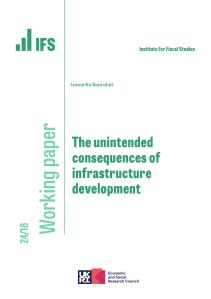There have been numerous calls for the UK to adapt its fiscal rules to place greater weight on improving public sector net worth, a measure that aims to summarise both sides of the government balance sheet: its assets (financial and non-financial) as well as its liabilities. The Labour Party has promised to ‘take greater account of public sector assets as well as debt in fiscal policy’, which could imply some sort of target for public sector net worth.
This is a debate worth having. Public sector net worth is a valuable addition to have alongside the more traditional set of fiscal metrics.
But a public sector net worth target should not supersede or stand in place of more traditional measures of debt, debt interest and borrowing. Performance against a public sector net worth target would tell us little or nothing about the government’s ability to access capital markets or service its debt. That is particularly true if the change in net worth is driven by a change in the value of non-financial assets (such as the road network, or the schools estate) that cannot realistically be sold to meet financing needs. An increase in the estimated value of an asset the government cannot sell cannot be taken as a signal that the government can afford to borrow more.
This is especially true right now. Debt and debt interest are at such high levels that it is they which are likely to be the binding constraint on fiscal policy, irrespective of any target for, or change in, public sector net worth.
These are among the findings of new research from the Institute for Fiscal Studies, published today as a pre-released chapter of the 2023 IFS Green Budget, produced in association with Citi and with funding from the Nuffield Foundation. The chapter considers the case for and against a fiscal target for public sector net worth, and finds:
- There are definitely cases where a narrow focus on public sector debt can be misleading and/or unhelpful, and where public sector net worth would provide a more complete picture of the impacts of government action or inaction. This is most obviously the case when the government is considering asset purchases (such as nationalisations) or asset sales (such as the selling of the student loan book).
- Public sector net worth can provide a useful framework for holding the government to account when it promises to ‘borrow to invest’, and it can strengthen the incentives for governments to invest well, to manage public sector assets better and to think about the long term. In short, it has clear theoretical attractions. UK public sector net worth is also relatively low by international standards, something which is often pointed to by proponents of a public sector net worth target.
- But a public sector net worth target might work rather less well in practice, and not just because it tells us nothing about a government’s ability to borrow or to service its debt.
- The most significant difference between public sector net worth and other balance sheet measures is its inclusion of non-financial assets. These assets are extremely difficult to value, both practically and conceptually. In many cases, the recorded value (often the ‘replacement value’ – how much it would cost to replace the asset in its current condition) bears little relevance to the economic or social value of the asset, or to assessments of fiscal sustainability. This would limit the usefulness of a net worth target in practice.
- Choices over definitions and modelling assumptions also matter enormously for estimates of net worth – more so than in the case of a debt target. Whichever measure of public sector net worth is used, it would be complex and difficult to communicate.
- Public sector net worth is the broadest and most comprehensive balance sheet measure available. But it does not and cannot comprehensively capture the assets and liabilities of the government: it ignores the state’s single greatest asset (its ability to tax future generations) and its greatest liabilities (the implicit promise to provide healthcare, pensions, education and security to future generations).
- All told, while there is a strong case for considering public sector net worth alongside a broader suite of fiscal metrics, it ought not to be at the centre of the UK fiscal framework. Labour’s proposal to ‘take greater account’ of public sector net worth appears sensible, but we caution against going further.
Ben Zaranko, Senior Research Economist at IFS and author of the chapter, said:
‘The current fiscal rules are crude and can be, and have been, gamed. Keeping a watchful eye on a measure of public sector net worth would be sensible and could discourage some forms of bad fiscal behaviour. But that doesn’t mean that it can form the basis of a good fiscal rule, and it doesn’t mean that changes in net worth are a good guide for policy.
‘In any case, adopting a public sector net worth target would not change the fiscal fundamentals facing this or the next government. Some subset of more traditional measures of debt, debt interest and borrowing should be retained, and it is those which are likely to be the binding constraint on fiscal policy in the years to come.’








